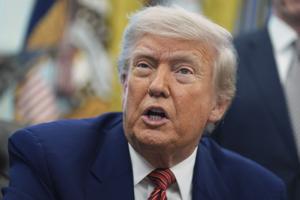President Donald Trump announced a significant trade agreement with Vietnam on Wednesday, marking a pivotal moment in U.S.-Vietnam economic relations. The deal, revealed on Trump’s Truth Social platform, will permit American goods to enter Vietnam duty-free, while Vietnamese exports to the United States will incur a 20% levy.
This development is poised to reshape the trade dynamics between the two nations, potentially boosting U.S. exports and impacting Vietnam’s trade strategy. The agreement underscores the ongoing efforts by the Trump administration to recalibrate trade relationships globally, aiming to favor American economic interests.
Background and Context
The announcement comes amid a backdrop of evolving trade policies under Trump’s leadership, characterized by a focus on renegotiating existing agreements to secure more favorable terms for the United States. Historically, Vietnam has been a significant beneficiary of trade with the U.S., with its exports often outpacing imports.
In recent years, the U.S. has sought to address trade imbalances with several countries, including Vietnam. The new agreement appears to be a strategic move to bolster American manufacturing and agricultural sectors by opening up the Vietnamese market to U.S. products without the burden of tariffs.
Expert Opinions and Industry Reactions
Trade experts have offered mixed reactions to the deal. Some view it as a necessary step to level the playing field for American businesses. According to Dr. Emily Chen, a trade analyst at the Global Trade Institute, “This agreement could significantly enhance the competitiveness of U.S. goods in Vietnam, providing a much-needed boost to American exporters.”
However, concerns have also been raised about the potential repercussions for Vietnamese exporters. “A 20% levy on Vietnamese goods could lead to increased costs for consumers and businesses in the U.S.,” noted Nguyen Tran, an economist specializing in Southeast Asian markets.
“The deal is a double-edged sword. While it opens doors for U.S. goods, it also challenges Vietnamese exporters to adapt quickly,” Nguyen Tran added.
Historical Parallels and Future Implications
This trade agreement is reminiscent of past efforts to recalibrate trade relations, such as the U.S.-China trade talks that dominated headlines during Trump’s presidency. Similar to those negotiations, the U.S.-Vietnam deal reflects a broader strategy to assert American economic interests more aggressively on the global stage.
Looking forward, the deal could set a precedent for future trade negotiations with other countries in the region. It may also influence Vietnam’s trade policies, prompting the country to explore new markets and partnerships to offset the impact of the U.S. levy.
Meanwhile, American businesses are likely to monitor the implementation of the agreement closely, eager to capitalize on the new opportunities in Vietnam. The agricultural sector, in particular, stands to benefit significantly, with the potential for increased exports of American farm products.
Next Steps and Consequences
As the trade deal takes effect, both nations will be watching closely to assess its impact on their respective economies. For the United States, the primary focus will be on increasing exports and reducing trade deficits, while Vietnam will need to navigate the challenges posed by the new levy on its goods.
The move represents a bold step in the Trump administration’s trade policy, with potential ripple effects across the global trade landscape. As other nations observe the outcome of this agreement, it may influence their own trade strategies and negotiations with the U.S.
Ultimately, the success of the U.S.-Vietnam trade deal will depend on its execution and the ability of both countries to adapt to the new trade environment it creates.
